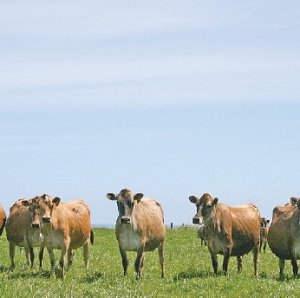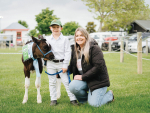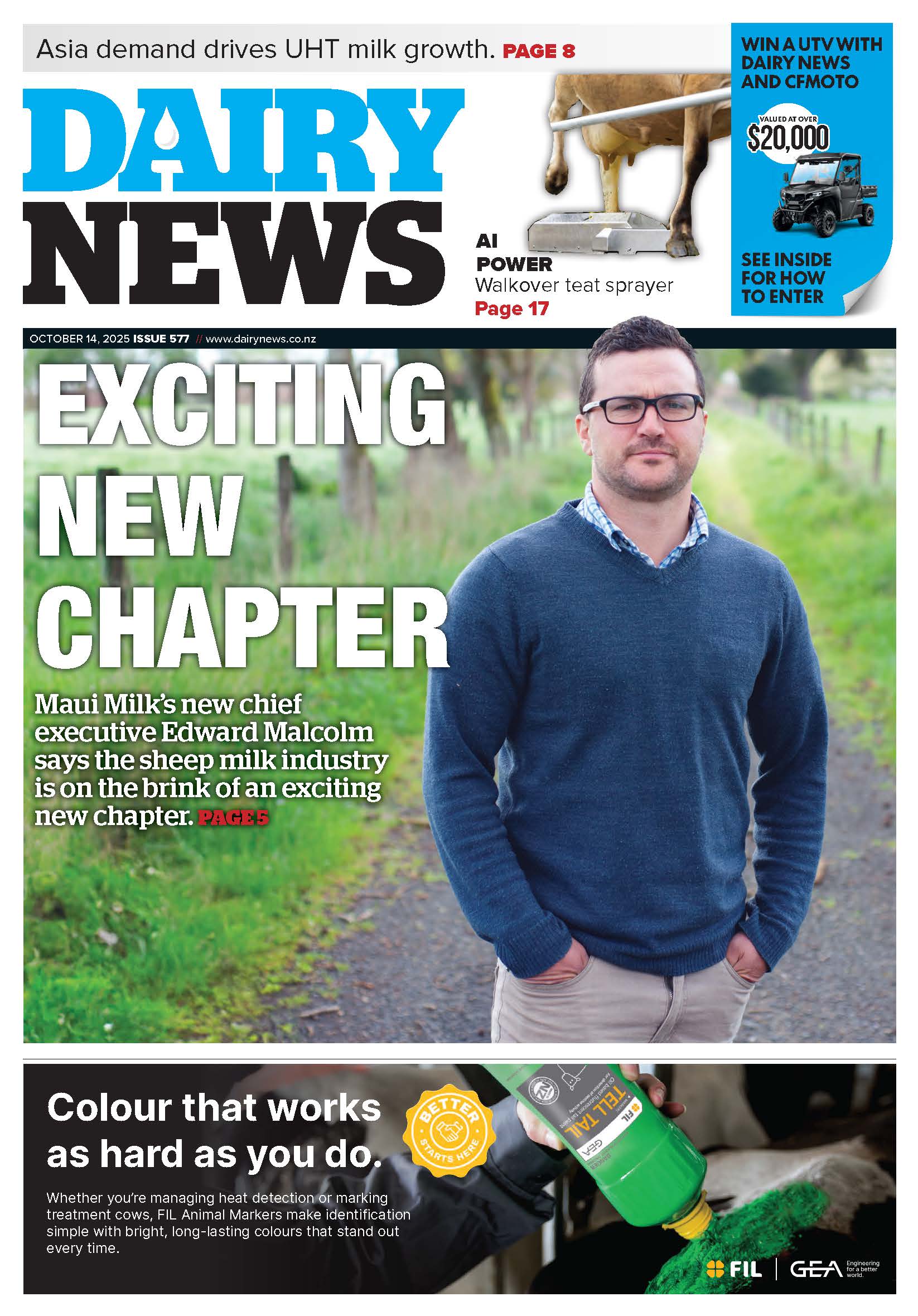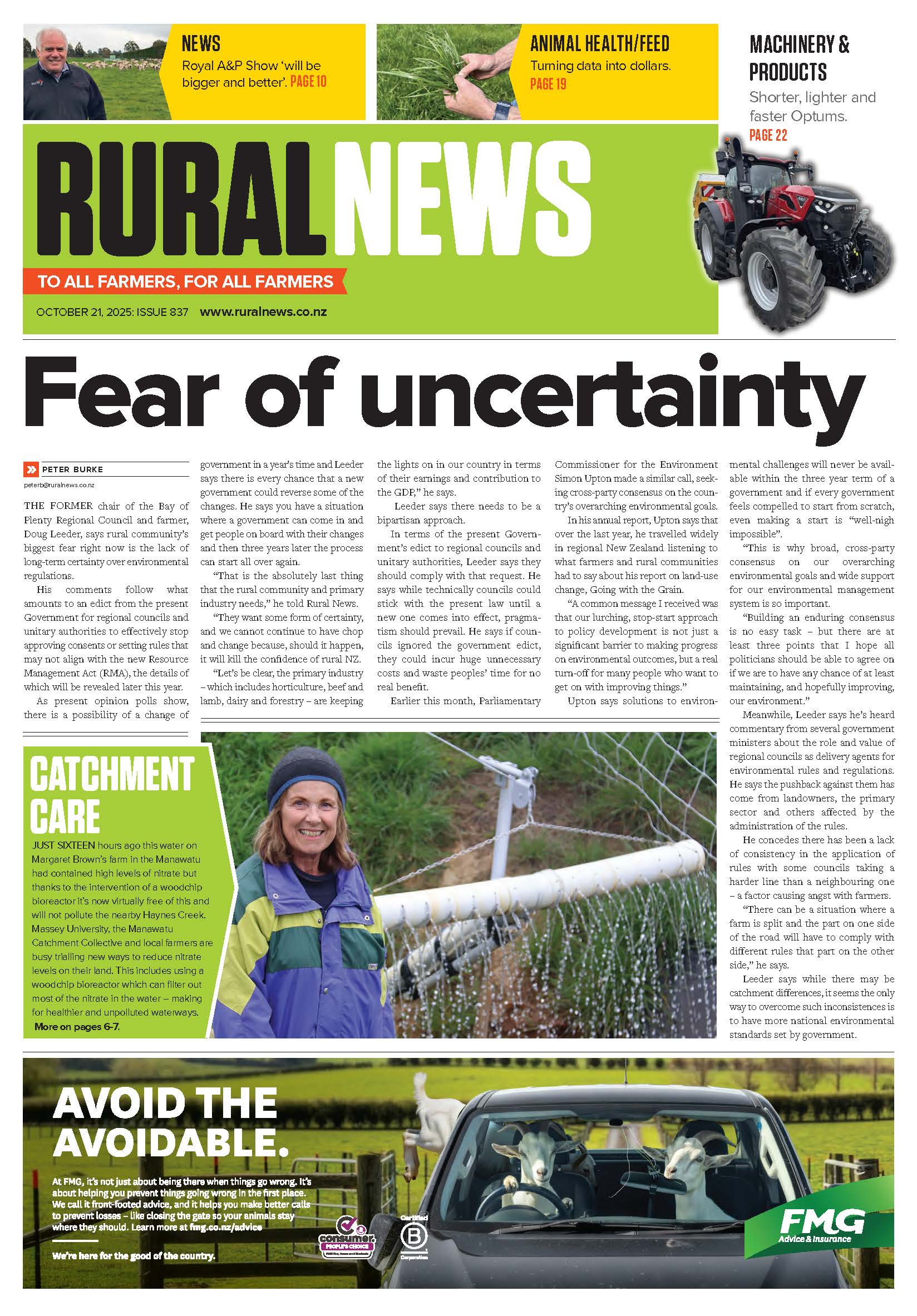For two seasons Lee Bryant and his wife Sarah have been variable order sharemilkers on a 1450 cow property owned by Dave and Karen Ellis, 10km north of Omarama.
Only converted two seasons ago, it is one of only two dairy operations in the immediate district. With many frost days, low humidity and rainfall about 400mm a year the couple could be regarded as farming in pioneering country for cows. It would never have been conceived 10-15 years ago.
Water supply for the 400ha property's three centre pivots comes from the nearby Lake Ruataniwha scheme in unlimited amounts to turn country previously the preserve of sheep into a productive dairy operation.
With its short, intensive growing season that can see frosts strike in April and cold lingering well into November, the season can move from feeding silage supplement out one week, to harvesting the spike in surplus only three weeks later.
Meantime the harsh winters bring particular demands on autumn pasture management that are counter intuitive for most dairy farmers focussed on building a good feed reserve heading into winter.
The frost days require pasture to be grazed down to a farm average of only 1900kgDM/ha. The lower residual heading into winter will ensure minimal frost damage to grass that will turn into a brown mush if left standing through winter, offering no feed value coming into spring.
"That was a lesson we learned the first season here. The first year we did not get the most out of the pasture we did have; at calving time the cows were in good condition, but went backwards pretty quickly, and we had a few metabolic problems."
Lee had previous experience using Rumensin on a property at Waimate, and had noticed the difference between having it as an input and not having it on that property. Those cows that did not have Rumensin exhibited less energy and production, while those that had received it had fewer deaths, more energy and generally performed better.
"After talking with our farm advisor, and discussing it with the farm owner David and our vet, we decided with the better payout prospects we wanted to get milk solids up, and the vet's advice was to put Rumensin through the water line."
The property has about 40ha of new grass, and silage supplements amounted to 360 tonne this season. Rumensin helped maximise benefits from both inputs – no bloat occurred in cows grazing the young grass, while the feed value of the silage was maximised, putting an average of 420kgMS per cow into the vat this year, a good lift on the average of 396kgMS per cow the season before.
Lee has found the drier environment seems to create greater dry matter content in the grass than is apparent by eye; often the plate meter may indicate 3000kgDM, when that amount is nearer 3500kgDM/ha.
The increased proportion of young grass, good cow condition coming into calving, and addition of Rumensin have put the farm on track for an excellent production year, totalling 610,000kgMS with only 100 more cows, and exhibiting a steady milk curve through much of the season.
For April the herd produced 65,000kgMS, only 24% off the season peak of 85,000kgMS which had a 10 day average peak of 1.95kgMS/cow. Lee says the better energy levels over spring helped achieve an excellent empty rate of 5.1%.
His positive experience with Rumensin has him intending to use it on his next job, a family equity partnership in Canterbury that will be a higher input, higher stocked farm running 4.3 cows per hectare.
"We are hoping to get up to 550kg per cow, there is no reason why we could not do that, and Rumensin will have a part to play in achieving that."
















